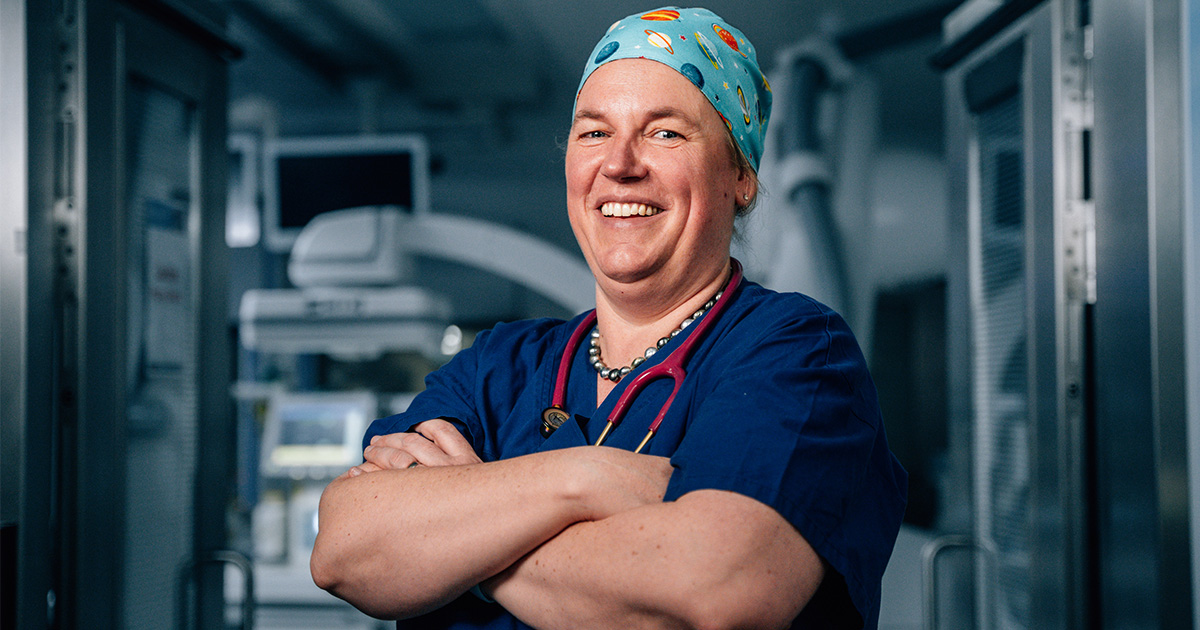Search
Research
Penicillin allergy SHACK: Survey of hospital and community knowledgePenicillin allergy accounts for the majority of all reported adverse drug reactions in adults and children. Foregoing first-line antibiotic therapy due to penicillin allergy label is associated with an increased prevalence of infections by resistant organisms and longer hospitalisation.
Research
Aerosolized drug delivery in awake and anesthetized children to treat bronchospasmBronchospasm is a common respiratory adverse event in pediatric anesthesia. First-line treatment commonly includes inhaled salbutamol. This review focuses on the current best practice to deliver aerosolized medications to awake as well as anesthetized pediatric patients and discusses the advantages and disadvantages of various administration techniques.
Research
Without training, they lacked knowledge. Without knowledge, they lacked confidence. Without confidence, they lacked victory (Julius Caesar)Britta Regli-von Ungern-Sternberg AM FAHMS MD, PhD, DEAA, FANZA Chair of Paediatric anaesthesia, University of Western Australia; Consultant

News & Events
Prime Minister’s Prize for pioneering WA anaesthetistCongratulations to trailblazing Western Australian paediatric anaesthetist and researcher Professor Britta Regli-von Ungern-Sternberg, who has been awarded a prestigious Prime Minister’s Prize for Science for globally influential research that has made surgery and recovery safer for babies and children.
Research
Current post-tonsillectomy analgesia practices among Australian and New Zealand anesthetists, and opinions on non-opioid alternativesChildren experience significant pain following extracapsular tonsillectomy surgery, and while opioids are often prescribed to treat this, clinicians may be wary of their adverse side effects, leading to variation in practice. There is a need for improved post-tonsillectomy pain management in children.
Research
Association of preoperative nocturnal hypoxaemia nadir and fentanyl ventilatory sensitivity in children with obstructive sleep apnoea undergoing general anaesthesiaObstructive sleep apnoea (OSA) has been thought to increase the risk of respiratory depression from opioids. The primary aim of this study was to assess whether preoperative hypoxaemia by sleep study pulse oximetry imparts greater opioid sensitivity.
Research
Trends in paediatric anaesthesia research publications and the impact of author sex, country of origin, topic, and external fundingThe current research landscape has become increasingly competitive with approximately 35% of submitted manuscripts accepted for publication by peer-review journals. It is known that studies with certain 'favourable characteristics' have an increased likelihood of acceptance for publication, such as prospective study design, multiple sites, and notable authors.
Research
Is there a role for lung-protective ventilation in healthy children?Lung-protective ventilation (LPV) has been adopted in the theater environment as a strategy to reduce pulmonary complications under anesthesia. Postoperative pulmonary complications are not infrequent and may have significant implications on the postoperative length of stay as well as the morbidity and mortality of pediatric patients.
Research
A survey of the global impact of COVID-19 on the practice of pediatric anesthesia: A study from the pediatric anesthesia COVID-19 Collaborative GroupPediatric anesthesiology has been greatly impacted by COVID-19 in the delivery of care to patients and to the individual providers. With this study, we sought to survey pediatric centers and highlight the variations in care related to perioperative medicine during the COVID-19 pandemic, including the availability of protective equipment, the practice of pediatric anesthesia, and economic impact.
Research
Pediatric Airway Management in Times of COVID-19-a Review of the Evidence and ControversiesThis review summarizes and provides a comprehensive narrative synthesis of the current evidence on pediatric airway management during the COVID-19 pandemic.
